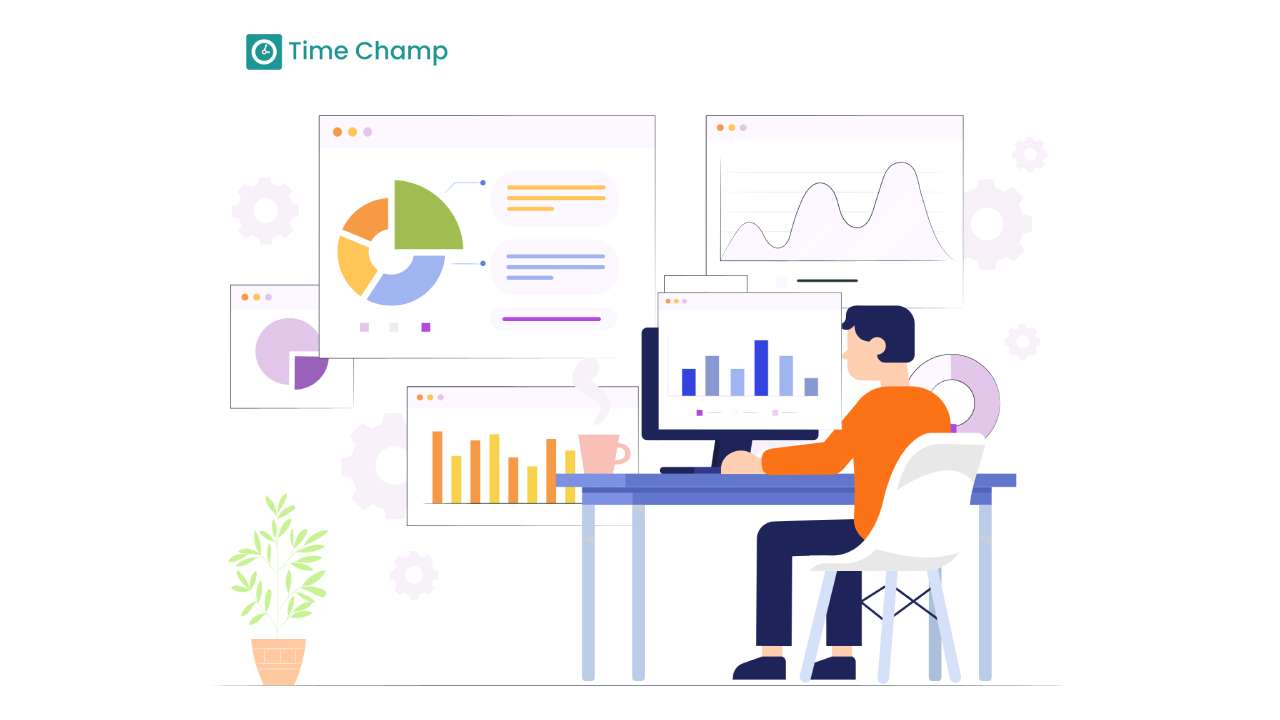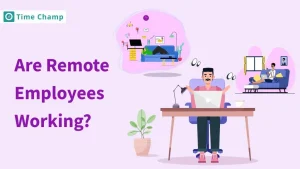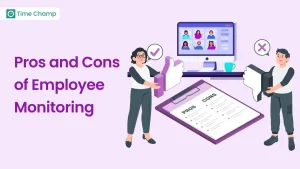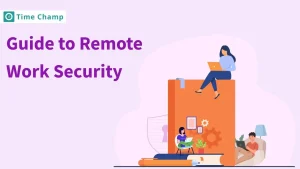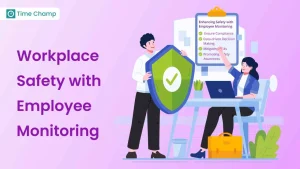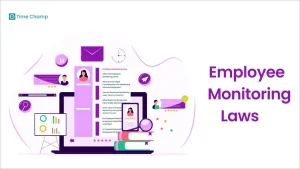Are you stressed out by employee productivity, data security issues, and the difficulties of working with a remote team? You’re not alone. In today’s technology, organizations require effective tools to compete effectively. That is where PC monitoring software comes in handy. This basic guide will explain how this technology works and how to use it to your advantage and avoid its drawbacks.
What is PC Monitoring Software?
PC monitoring software is an application used to monitor and log different activities on a computer system. This involves tracking system activity, user interactions, application usage, network traffic, and other parameters. The primary objectives of PC monitoring software are to increase security, efficiency, compliance, and productivity.
Types of PC Monitoring Software
There are various categories of PC monitoring software and each of them is designed to monitor and record activities in a computer system.
Here’s a quick rundown of some common types:
Employee Activity Monitoring Software
Employee monitoring software allows the employer to monitor the employees’ activities in the workplace. This software can track different activities of the employees including the use of the computer, browsing history, emails, and even the location in some instances. Employee monitoring software enables the employer to track the productivity of the employees, check for any unauthorized activities, protect the company’s data, and enforce compliance with organizational rules.
Network Monitoring
Network monitoring is actively monitoring a computer network to identify problems that may affect its performance, security, and reliability. Network monitoring software gathers information on traffic, devices, applications, and other components of the network to understand its status and performance. This software can monitor bandwidth usage, delay, loss, and other network problems that can be easily detected by the IT department or organizations.
Security Monitoring
Security monitoring is the act of continuously observing an organization’s networks, systems, and applications to detect security threats and events and then respond to them in the right manner. Security monitoring tools are responsible for collecting and analyzing security data such as logs, events, and alerts to identify threats or indications of compromise. It is crucial for safeguarding information and ensuring the stability and integrity of the system.
Parental Control Software
Parental control software is a kind of technology that allows parents to monitor their children’s activities, time spent on devices and applications, and the content they can access. This software enables parents to control the amount of time their children spend on the computer, restrict the sites they visit, and track their location, and their activities on social networks. Some common features of parental control software are website blocking, application blocking, remote control of the device, and monitoring of the activities done by the child to provide a safe and healthy use of the digital devices.
System Performance Monitoring Software
System performance monitoring is observing the performance of a computer system to assess its efficiency, reliability, and productivity. Monitors different aspects of a system including the CPU, memory, disk space, and application performance. It enables the administrators to know the system’s status, capacity planning, and resource management to ensure that the system is at its optimum and the users are not experiencing any problems.
E-mail Monitoring Software
Email monitoring software is a type of software used by organizations to monitor and analyze emails for compliance, security, and productivity. With this software, employers can filter the content of emails, attachments, recipients, and time stamps to prevent information leakage and identify unauthorized activities and security threats. However, email monitoring software can be effective in increasing security and compliance, but organizations need to consider employees’ rights, set up policies, and adhere to the law.
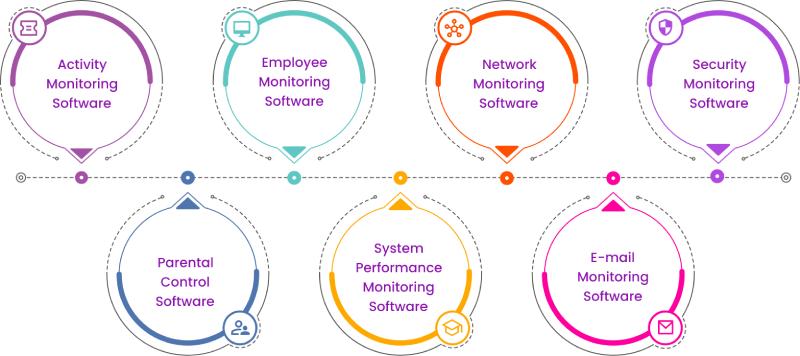
Benefits of Using PC Monitoring Software
This section outlines the benefits of PC monitoring software. This tool can create new opportunities and take an organization to a new level of performance, protection, and employee satisfaction.
Enhanced Security
Monitoring software can help organizations detect and prevent security breaches by identifying unauthorized access, potential data leaks, or suspicious activities on employees’ computers. This is crucial in safeguarding sensitive information and protecting against cyber threats.
Increased Productivity
Through the analysis of the user’s activities and performance indicators, PC monitoring software can reveal the areas that require optimization and increase the productivity of the employees.
Compliance Adherence
Most industries have compliance standards that need to be met, and this is where PC monitoring software can help record user’s activities for compliance.
Resource Optimization
Monitoring software helps in determining resource congestion by observing the application usage, internet connection, and system performance, thereby determining the usage of the hardware and software resources.
Remote Monitoring
Allows the administrators to monitor the operations and troubleshoot from a distance, which improves the response time and the time of disruption.
What Key Features Should Be Considered When Choosing PC Monitoring Software?
Selecting the right PC monitoring software is never an easy task, but do not fret! Here we are to help you with the most important aspects to consider when selecting the right tool. Now, let me briefly describe the factors.
1. Core Monitoring Capabilities
- Activity Tracking: Typed keys, mouse clicks, Web browsing, applications, and screenshots are the main things that are being monitored.
- Time Tracking: Keep records of working hours, rest breaks, and time spent on specific activities of the employees.
- Attendance Monitoring: Capture the login and logout time, monitor attendance, and have information on who is absent.
- Screen Recording: Performs surveillance on the employees’ computer screens for training, appraisal, or security purposes.
- Alerting and Reporting: Get notifications whenever any occurrence is out of the norm and produce comprehensive reports on the employees’ productivity and conduct.
2. Security and Privacy
- Data Encryption: It is important to encrypt the data when transmitted and stored to protect the privacy of the employees.
- Access Control: Ensure there are strict measures of access control to the monitoring data to only those allowed to access it.
- Data Retention Policies: Set guidelines on how long data should be kept and when it should be deleted to meet the privacy laws.
- Compliance: Make sure that the software does not violate the privacy legislation and policies of countries like GDPR or CCPA.
3. User-Friendliness and Integration
- Intuitive Interface: Select software easy to use for administrators and employees in the organization.
- Integration with Existing Systems: Search for software that can be easily connected to your current HR solutions, project management tools, or other applications.
- Remote Management: The flexibility of being able to control and supervise employees from any location.
4. Additional Features
- Website Blocking: Block certain websites or website categories to increase efficiency and minimize the time spent on non-work-related activities.
- Application Control: Control which applications employees can access or use.
- Keystroke Logging: Capture every input for a thorough examination of the employee’s performance.
- GPS Tracking: Monitor employee movement for field employees or teleworkers.
- Chat Monitoring: Supervise employees’ use of instant messaging.

10 Popular PC Monitoring Software
“The best way to predict the future is to create it.” – Peter Drucker. This applies to your business too! Use PC monitoring software to get insights into your team’s work, find out the problem areas, and thus, build a better future.
Here are some of the best PC monitoring software that you can use:
- Time Champ: Time Champ is a productivity tracking tool, that has many features. It includes aspects like time tracking, website and application tracking, reporting, and integration with other project management tools. Time Champ is easy to use for tracking and it provides information that can be useful in improving team productivity.
- Teramind: This is not just an employee monitoring software that is centred on time. It offers the features of email filtering, keylogging, and data leakage prevention. However, the features of Teramind are quite robust, can be invasive in terms of privacy, and may not be suitable for all organizations.
- StaffCop Enterprise: Provides enhanced employee monitoring capabilities like keystroke logging, file activity tracking, and remote desktop spying. It is employed in tracking the activities of employees and protecting organizational information.
- Harvest: This software is used in tracking time, billing, and managing projects. It is suitable for freelancers or small businesses that may need a basic solution to these operations.
- Kickidler: This software offers basic time control, web access control, and activity tracking features. It is suitable for organizations that need a simple way of monitoring working hours and minimizing interferences.
- Refog Employee Monitor: It monitors user activity, internet usage, and application usage in real-time. It is aimed at enhancing the efficiency of tracking employees’ productivity and preserving data confidentiality within companies.
- Veriato Vision: This is a complete solution that offers activity tracking, keylogging, email and website filtering, and data leak protection. In the area of security, Veriato Vision is very effective, but it is intrusive and should be done with adequate consideration for the employee’s privacy.
- Workpuls: Offers employee monitoring software that records the time spent on the tasks, websites visited, and applications used. It provides information on the level of production and enables organizations to enhance their performance.
- SoftActivity Monitor: The monitor offers employee monitoring software that has internet monitoring, application usage, and remote desktop monitoring. It is used for increasing the rate of work among employees and for enforcing organizational policies.
- iMonitorSoft EAM: This EAM software is used for tracking assets, maintenance, and work orders. This is ideal for organizations that have numerous assets like equipment or infrastructures that require tracking and management.
Best Practices for Using PC Monitoring Software
PC monitoring software can be useful, especially when parents or managers use it to monitor the activities of their children or employees, but it must be done in the right manner. What measures can you take to make your actions transparent and gain the employees’ trust?
Now let’s discuss the best practices for the PC monitoring software so that it can be beneficial for all the employees in the organization.
Promote Transparency:
- Communicate the intention to monitor and collect data.
- Set specific policies on the use of software and management of data.
- Make sure that employees are aware of any changes in the policies.
Focus on Productivity:
- Monitoring should be used for increasing productivity, security, and compliance.
- Offer suggestions based on the results of monitoring.
Respect Privacy:
- Acquire only the relevant information that will be used for monitoring.
- Ensure that stored data is protected by strong security features.
- Use access controls to limit data viewing to only authorized personnel.
Adopt Best Practices:
- Select software with good privacy policies in place.
- It is recommended to update monitoring policies occasionally to reflect the current technological developments and legal requirements.
- Inform the employees about the software and their rights and responsibilities in its use.
By applying these best practices, you can obtain the maximum effect of PC monitoring software, minimize the negative impact, and promote the formation of a positive organizational climate.
Conclusion
Therefore, PC monitoring software is a useful tool that can help organizations increase efficiency, protect information, and meet legal requirements. Use this knowledge to select the right tool and open the door to the future of productivity, safety, and a successful digital environment.
Get a demo today and discover the possibilities of a more efficient and protected environment.
Sign up for FreeBook DemoFAQS on PC Monitoring
Yes, PC monitoring software is legal in most cases, but it is important to adhere to the laws of the country and to notify the employees.
While it’s technically possible, secret monitoring is often discouraged and can be illegal. Transparent policies are the best practice
Yes, many monitoring tools are designed to detect and alert on suspicious activities that could indicate insider threats.
While PC monitoring increases productivity, it also poses an invasion of privacy. To address ethical issues, maintain openness, emphasize progress, and honor employee privacy.
Be transparent about monitoring, and stress that it is done to increase efficiency, protect assets, and engage employees in creating policies.
PC monitoring software can be a data warehouse, where all the information about applications used, websites visited, and typed keys can be stored. It may also monitor system performance and files for a wider view.
